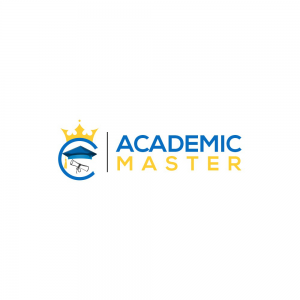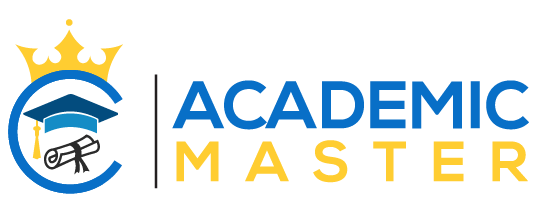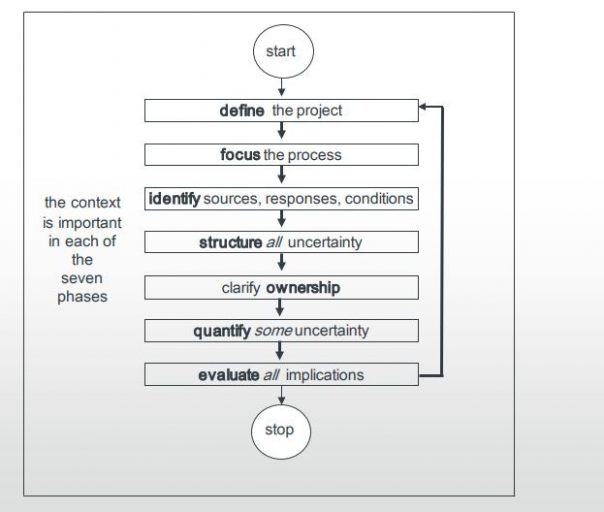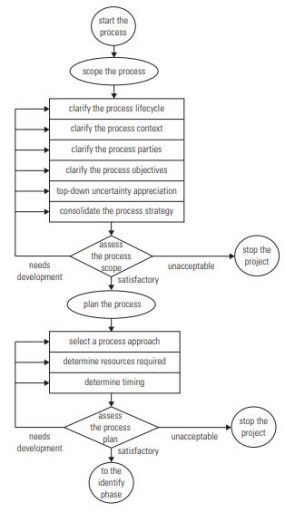A project is an endeavour in which various resources such as human, material and financial are organised to achieve a specific scope of work for which the specifications are already given and the constraints such as cost and time are also mentioned (Turner, 1992). Whereas uncertainty in a project means the lack of certainty and risk means those outcomes of a project that turn out as unfavourable and when the outcomes turn out to be favourable then it is called an opportunity. It is necessary for the strategic alignment of the goals with the performance. It provides clarity and focuses on the tasks required to perform and execute a project. Proper project planning allows the business to ensure that the realistic expectations regarding a project are set and are met on time also proper project management allows an organization to mitigate the risks and avoid risks to become issues. There are a variety of risk management frameworks available that can provide help in this endeavour and can guide the company on how the risk should be managed. There are multiple project systems known as chain configuration, project hierarchy and parallel configuration; these systems tell that how different components of a project can be managed.
Moreover, to understand the project management the understanding of the project management framework is very significant. It is a basic structure that helps understand the project management. Project managers are free to choose among the best frameworks which they need to employ in their projects. For this, the use of performance and knowledge lens can create a sound understanding of the project. It helps to understand one of the critical questions that ask whether the project fits the overall strategy.
The frameworks have their strengths and weaknesses as every project varies in its own needs and resources. Some projects are of unique nature that causes the management to use different frameworks. One of the key generic to clarify the risk, uncertainty and opportunity is the PUMP that is the performance uncertainty management processes. The application of PUMP can be made in all kinds of projects and organisations. It emphasises that how the stages of the project lifecycle strategy must be shaped while the project execution and the delivery strategy plans are being shaped.
The structure of the basic performance uncertainty management process (PUMP) framework is based on the seven phases. These include the following.
Firstly, the project is defined.
Secondly, the uncertainty management process is focused
Thirdly, the management is required to identify all those sources of uncertainty, conditions that are relevant.
Fourthly, the uncertainty is required to be structured.
Fifthly, ownership needs to be clarified, and sixthly, all the relevant implications must be evaluated properly.
Such a process required an iterative process for obtaining an adequate level of efficiency and effectiveness. Every next step in the process refines the analysis progressively and make it useful.
Further, the deliverables of the earlier process when employed to evaluate here more effort is most likely to prove worthwhile (Chapman, C. and Ward, S., 2011).
Three Macro phases present the basic PUMP portrayal. These include:
Execute the qualitative analysis
Develop the basis for analysis
Execute the quantitative analysis
Further, relationship management also uses the frameworks of governance and contracts. These frameworks are used to decrease the level of uncertainty that is associated with the behaviour of the people, and they also guide regarding the meaning of such behaviour.
Similar issues must be addressed by the enlightened relationship management within the particular organisation and also certain related issues those are associated with the uncertainty management, for instance, inter-organisational contracts. There may be a variety of stakeholders at the different level of management hierarchy, and the management level where the formal contracts are not usually present when the related issues in this scenario are also similar to the inter-organisational context.
Also, a useful player to state is recognising the attractiveness of quantifying uncertainty about attainment of relevant performance attributes- to quantify uncertainty about performance as seen through a performance lens. It suggests estimating the variety of possible uncertain consequences for the performance characteristic of interest, with some point in the range defining the boundary between what are regarded as favourable or unfavourable possible outcomes. This point is also known as opportunity/risk datum.
Probability Impact Grid or Probability Impact graph encompasses cells defined by categories of likelihood or probability and severity or impact. Identified possible opposing events or risks are assigned to a particular cell in the network according to the projected level of probability and impact of the possible event. PIGs suffer from major inherent limitations (Cox, 2008; Hubbard, 2009) and require a simplistic characterization of risk and uncertainty that falls well short of a minimum clarity requirement. The use of SCERT (Synergistic Contingency Evaluation and Review Technique) has been a precursor of the performance uncertainty management process (PUMP).
The risks regarding bias are also involved in the case of Highways Agency. The case included the perspective of a large client and the in a portfolio where the large projects were addressed in parallel. There was a requirement that a re-estimation exercise in the initial implementation. The company required to re-estimate the cost of the project, the worth of the project was about 20 billion and the period they had was about six weeks. The company took a stratified sample that was scaled up to the size portfolio cost. The company also used a decomposition of three components to estimate the uncertainty composite for each project. The three components were a cost of land, construction cost and the cost of traffic management. When the management considered a proposed new project at the beginning of the concept stage, ambiguity emerged due to the incomplete knowledge. Finally, a three-part approach was accepted, and the construction cost was disintegrated into three components.
Finally, a three-part approach was accepted, and the construction cost was disintegrated into three components; the estimator already had a cost uncertainty when the original point value construction cost estimate was prepared.
The provisions for risk are calculated through common practice project risk management approaches, and everything else remains as residual so that the relevant uncertainties must be addressed in quantitative terms. The estimator involved must know the requirement regarding the sensitivity diagram. This sensitivity diagram further is used as a framework so that integration could be built among the three components for the probability distribution of the estimation processes.
Thus, while uncertainty is just ‘lack of certainty’ certainty can be viewed by the performance and see it as ‘uncertainty about achieving the objectives. All the techniques, tools and frameworks discussed above help to identify an ‘opportunity/risk datum’. The uncertainty is found in the performance regarding opportunity and risk. The same structure can be followed by the qualitative considerations in intuitive or informal terms with multiple objective versions. An example can be seen in this regard related to the National Power, a company that did not make risk quantification which leads the company to unfavorable cash flow and as a result the company remain inadequate to seize the opportunities it might capitalize on, that the power could be produced shortly after the supply of gas was available.
The visualisation of opportunity, uncertainty and the risk reflect that they do not facilitate the overall uncertainty in the matters concerned. Also, they also have no consideration regarding the management of the uncertainty and what could be done about it. These things are overlooked immensely. Thus it is essential to efficiently address both the opportunity and the risk while focusing explicitly on the management of uncertainty. Uncertainty must be taken holistically and for the overall project while including all the stakeholders and the relevant parties with their motives during the whole lifecycle of the project.
To sum, it can be concluded that the certain knowledge that is not limited to the information is needed at the end of a project’s lifecycle so that the progress must be made in the stages to come. Further, the lack of ambiguity and the fact that it must be addressed must be taken into consideration. The ambiguity is related to the lack of clarity within the behavior of the relevant project players, lack of data; lack of detail; lack of structure to consider issues, working and framing assumptions being used to consider the issues; known and unknown sources of bias; and ignorance about how much effort it is worth expending to clarify the situation. A key concern is to understand where and why uncertainty is important in a given organisational context, and where it is not.
PART 2
The execution of PUMP and the delivery strategy are important for shaping the states of project life cycle along with the associated gateways that are important for the project life cycle. Initially, the structure of seven Ws was the basic framework that was used in all the stages of the project life cycle. However, the focus was shifted as the life cycle has been evolved. The concept of shaping stage, the important considerations for PUMP are multifarious. They range from the plans of business case purpose to the relationships and contracts, activities and resources. In the DOT shaping state and the E & D shaping, stage PUMPs chain of concern also include the Ws component.
One of the phases discussed in the basic PUMP portrayal includes ‘defining the project’. In this phase, the identification of the objectives regarding the projects is made. The optimal solution options are identified to respond to the need that has been documented. The definition phase requires conducting the feasibility study to define the scope of the project and to investigate that the goals and objectives which are being set in this phase shall be feasible to cater the need for which the project is being initiated. In other words, this phase determines whether the project can be executed. In this stage, the solution which is recommended to be achieved is approved. The manager who is responsible for leading the project is also decided, and the team of the project also takes the shapes. This is a pre-stage before getting into the detailed planning of the project.
It is essential as it determines the scope of the project. The gateway of the PUMP pack assumes that the deliverables that are fit for the purpose shall always result in a ‘gateway’ yes. However, there may be unplanned iterations. Such unplanned iterations are required to be sent back to the define phase so that they can be managed effectively. These are iterations are not considered as the opportunities during the project and are required to be managed by applying ‘fit for purpose’ test. Such a test must be rigorous and unbiased. If such iterations occur during the later phases that means that there are some loopholes in the phase. There is also a probability that there might have been significant changes in the circumstances that have caused such a failure.
Further, there is also a defining difference that occurs when the end of the strategy shaping stages and the start of the strategy shaping stages differ. Their reason for the difference may be the increase in the rate of expenditure which has been incurred during the execution of the project. This difference may also tend to increase the number of iterations throughout the process. Not only the complication regarding iteration but the probability of the increase in direct costs also increases and a gateway yes can be turned into a very precarious state of the project.
Finally, references plan also relevant to consolidate and explain the strategy. These are the descriptions regarding the strategic level and are also captured at the PUMP define a state. These reference plans thus increase the importance of this phase. The reference plan is required to provide a simple explanation of the project to the directors and the senior executives. For this reason, these are also admired by them and are considered of having an immense value. The most important step of the defining phase is the presence of the appropriate reference plans as it can lead to a valid conclusion and can be followed at the start of the PUMPs.
The importance of referral plans lies in the functionality of these plans as they tend to capture any misconception in the stat of the project. Further, the credibility is not a necessary factor for the referral plans as they are created as a prototype and before applying PUMP. They are also not required to show any proactiveness and are not linked to any contingency plans. Also, these plans may not be revealed at times as it can embarrass any of the major players in the project. Thus secrecy is maintained at certain points.
Part 3
Focus phase specific tasks
To manage uncertainty, the basic PUMP provides a framework however that framework depends upon the contextual settings of a project as no one approach works better in all the circumstances. Further, this phase of the basic PUMP requires adaptations in the fundamental processes according to the specific context of the project and the life cycle stage as well. One of the key aspects of this phase includes the consideration of the fact that to what extent the level of complexity would be incorporated in a while performing the analysis.
Focus phase also provides deliverable in different forms; they may be in the form of a single document or the form of several documents. However, the clarity is vital to the key aspects regarding PUMP approach that has been chosen. It does not matter what is the form of the deliverable instead the clarity is more important. These deliverables which are decided in the focus phase for each stage of the life cycle stage cause to bring a formal definition that is suitable for all those for who the understanding of the PUMP is necessary.
The clarity of the process context, lifecycle, parties and objectives are very important in this state. In the case of process lifecycle, it is required that the PUMP process life cycle must be addressed with the appropriate anticipation regarding the overall process strategy issues. On the other hand clarity in the process context tends to influence the process strategy effectively. For instance, if the PUMP process is being used in the organization for the first, then increased time and effort investment shall cause the future benefits of the company to increase. Moreover, the clarification concerning the process parties is also an important step in this regard. It requires the clear understanding of the process to those who are undertaking the responsibility of uncertainty analysis. They must clarify in the first instance that for whom this analysis has been conducted and what shall be the reporting process that is required to be managed while working.
It has also be seen that the wrong use of the title of the role also creates uncertainty and confusions among those undertaking the responsibilities. For instance, by replacing PUMP manager with the risk manager may create confusions. In the continuation of all these clarifications, another clarification includes regarding the process objectives. It clarifies the scope and strategy of the project defined earlier in the PUMP. When the scope and purpose of the proposed PUMP are clear, then it is convenient to determine the quantification.
The determination of resources are also mandatory in this phase. The project may entail specific restraints of time and cost this is it very important to pre-determine the resources which must be required to perform the job effectively and efficiently. Further, the determination of the process timing is also necessary to understand that how long it shall take? The duration to conduct an uncertainty analysis must be determined so that time could be utilised properly and effectively.
To sum, focus phase is the complements to the define phase and contains a significant role in the whole PUMP process.
References
Chapman, C. and Ward, S., 2011. How to manage project opportunity and risk.
Chapman, C. and Ward, S., 2011. Uncertainty, risk and opportunity.







